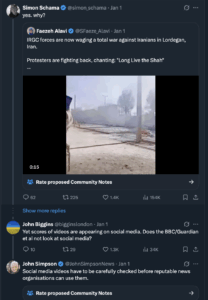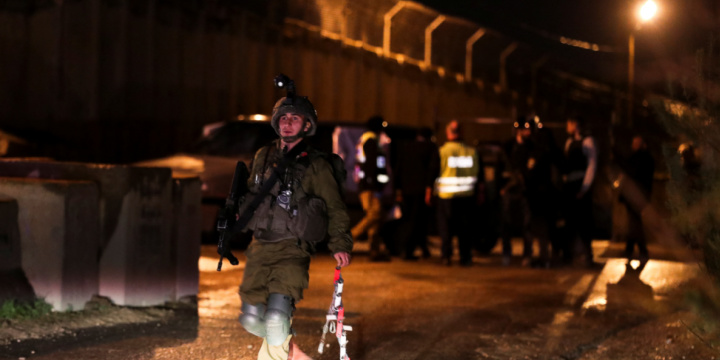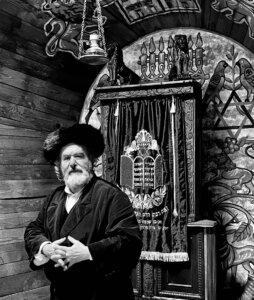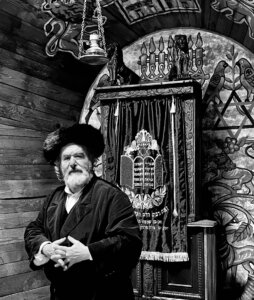Uncategorized
All the Jewish MLB players to watch in 2023
(JTA) — The 2023 MLB season is almost upon us, and it has the potential to be a historic year for Jews in professional baseball.
Last year, 17 Jewish players appeared in a game — a likely record. This season, the number could be even higher.
The slate of Jewish players in the game this year features stars such as Max Fried and Alex Bregman, on-the-rise big league talent like Harrison Bader and Dean Kremer, and an impressive wave of minor league prospects on the cusp of the majors.
With the World Baseball Classic over and Spring Training winding down, there are plenty of storylines for Jewish fans to keep an eye on, including a number of Jewish teammate pairs — and even a possible trio.
Opening Day is next Thursday. Here is a complete guide to every Jewish player to watch in 2023.
The big leaguers
Max Fried pitches in Game 6 of the 2021 World Series, Tuesday, Nov. 2, 2021. (Mary DeCicco/MLB Photos via Getty Images)
Max Fried, Atlanta Braves, starting pitcher: Fried is arguably the best Jewish player in baseball — and one of the best pitchers, period. Fried was an All-Star for the first time last season, finished second for the National League Cy Young award and has won three Gold Gloves in a row for his defense. The Los Angeles native grew up idolizing fellow Jewish lefty ace Sandy Koufax.
Alex Bregman, Houston Astros, third baseman: Bregman returned to form in 2022, hitting 23 home runs with 93 runs batted in as the Astros won the World Series. The two-time All-Star has become one of the best postseason hitters of his generation, setting all-time records for most home runs and RBIs among third basemen. Bregman has been an active member of the Houston Jewish community.
Joc Pederson, San Francisco Giants, outfielder: Pederson is entering his second season playing for manager Gabe Kapler’s Giants. Last year was his best since 2019, as he notched 23 home runs, a .274 batting average and his second career All-Star selection. Pederson played for Team Israel in the 2023 WBC and even helped recruit fellow Jewish big leaguers to the team.
Harrison Bader, New York Yankees, outfielder: Bader will likely begin his first full season in New York on the injured list — injuries that kept him from playing for Team Israel, which he had committed to do. In parts of six seasons in the big leagues, spent almost entirely in St. Louis, Bader has become known for his elite defense in the outfield — he won a Gold Glove in 2021 — and last fall became a breakout star for the Yankees in the playoffs. Bader’s father, who is Jewish, told the Forward that his son is considering formally converting to Judaism.
Dean Kremer, Baltimore Orioles, starting pitcher: Born in California to Israeli parents, Kremer was the first Israeli drafted into the MLB. He told the Jewish Telegraphic Agency during the WBC that Israel is “like another home.” Kremer was very good for Baltimore in 2022, posting a 3.32 earned-run average (ERA) in 21 starts — highlighted by a complete game shutout against Bregman’s Astros in September.
Rowdy Tellez, Milwaukee Brewers, first baseman: Tellez has the most power of any Jewish player, crushing 35 home runs in 2022. In one game in May, Tellez hit two home runs on his way to a historic 8-RBI game for the Brewers. Tellez, who had a Jewish mother and a father with Mexican heritage, considered playing for Israel in the WBC but opted to represent Mexico.
Eli Morgan, Cleveland Guardians, relief pitcher: Last year was Morgan’s first season as a reliever, and it seemed to be the right move for the 26-year-old righty. Morgan appeared in 50 games for Cleveland, posting a 3.38 ERA — though his first half (2.83 ERA) was much stronger than his second half (4.26 ERA). Morgan originally planned to play for Israel in the WBC but ultimately did not join the team.
Garrett Stubbs, Philadelphia Phillies, catcher: Stubbs played in 46 games for the Phillies as the backup behind J.T. Realmuto, the best catcher in baseball. Stubbs delivered the game-winning hit in Israel’s lone WBC victory, while playing third base for the first time, and has already said he will play for Israel again in 2026. (His younger brother C.J. is a catcher in the Astros system and replaced Garrett on Team Israel following an injury earlier this month.)
Richard Bleier, Boston Red Sox, relief pitcher: After not making it to the big leagues until he was 29, Bleier has grown into a reliable reliever across seven MLB seasons, with a 3.06 career ERA. Bleier was traded to Chaim Bloom’s Red Sox this offseason after two years in Miami — where his most famous (and unfortunate) moment was a three-balk at bat last year. Bleier pitched for Israel in the 2023 WBC.
Jake Bird, Colorado Rockies, relief pitcher: Bird made his MLB debut last summer and would go on to pitch in 38 games for the Rockies out of the bullpen. Bird was originally on Israel’s WBC roster but dropped out at the last minute due to injury.
Zack Weiss, Los Angeles Angels, relief pitcher: Weiss debuted in 2018, but it did not go well: he allowed four runs, including two home runs, without recording an out. That meant his earned run average was — and this is real — infinite. Four years later, Weiss made it back to the big leagues with the Angels, appearing in 12 games with a more respectable 3.38 ERA. After a solid stint with Israel in the WBC, Weiss is expected to factor into the Angels bullpen this season, though he could start the season in the minor leagues. Weiss has talked about attending Rosh Hashanah services as a minor leaguer in Montana.
Dalton Guthrie, Philadelphia Phillies, utility player: Guthrie is the most recent Jewish ballplayer to debut, joining the Phillies in September. He played in 14 games for the National League champions, and even appeared in a postseason game. Guthrie is the son of former MLB pitcher Mark Guthrie, who played for eight teams across a 15-year career.
Scott Effross, New York Yankees, relief pitcher: Effross is likely to miss all of 2023 after undergoing ulnar collateral ligament reconstruction (known as Tommy John surgery). Before his injury, Effross, who wears a Star of David necklace on the mound, was excellent for the Chicago Cubs and Yankees last year, with a 2.54 ERA in 60 games. Effross also would have played for Israel had he not gotten hurt.
(Also worth noting: Chicago White Sox ace Dylan Cease, the 2022 American League Cy Young runner-up, does not identify as Jewish but was on Israel’s preliminary roster of eligible players for the 2023 WBC.)
The prospects
Spencer Horwitz played for Team Israel in the 2023 World Baseball Classic. (Courtesy of Team Israel)
There are a number of Jewish players who are on the brink of breaking into the big leagues — including a few who could even make Opening Day rosters.
Jared Shuster, Atlanta Braves, starting pitcher: Shuster is the top prospect in the Atlanta organization, and in the midst of a stellar Spring Training, with a 1.45 ERA through 18.2 innings. He has a serious shot of securing the final spot in the Braves rotation to begin 2023. He was a first-round draft pick in 2020 and played in the MLB Futures Game last year.
Matt Mervis, Chicago Cubs, first baseman: Mervis played for Israel in the WBC and though he begins the season in the minors, he is almost certain to join the big-league team this season. The Washington, D.C., native belted 36 home runs in the minors last year, hitting .309 with 119 runs batted in while rising through the Cubs’ system at an impressive pace.
Zack Gelof, Oakland Athletics, second baseman: Another Israel player, Gelof will begin the season in the minors but is expected to make his debut this year. The 23-year-old is Oakland’s No. 3 ranked prospect and was a second-round pick in the 2021 draft. (His younger brother, Jake, currently plays at the University of Virginia and is seen as a possible first round pick this year.)
Spencer Horwitz, Toronto Blue Jays, outfielder: Horwitz played with Gelof and Mervis in the WBC, and will also start 2023 in the minors. But the 25-year-old Maryland native is a candidate to crack into the big leagues at some point this season as depth for the loaded Blue Jays.
Other minor leaguers with MLB experience
Kevin Pillar during Spring Training with the New York Mets, Feb. 27, 2021. (Alejandra Villa Loarca/Newsday RM via Getty Images)
Kevin Pillar, Atlanta Braves, outfielder: The MLB veteran signed a minor league deal with the Braves this offseason and has a chance at securing a spot on Atlanta’s bench entering the year. Pillar has embraced his status as a Jewish ballplayer.
Jake Fishman, Oakland Athletics, relief pitcher: The Team Israel pitcher made his MLB debut with (who else) the Marlins last season, and begins 2023 at the Triple A level with Gelof. He could be called up as bullpen depth.
Bubby Rossman, New York Mets, relief pitcher: Rossman made his debut last year with the Phillies, and it also did not go well. But after a strong stretch with Team Israel, Rossman begins the year in the New York Mets system. Despite his Yiddish-sounding name, Rossman is only 30.
Ryan Sherriff, Boston Red Sox, relief pitcher: Sherriff has four years of big-league experience under his belt with the Cardinals and the Tampa Bay Rays. He signed a minor league deal with the Red Sox this offseason.
Kenny Rosenberg, Los Angeles Angels, relief pitcher: Rosenberg made his debut for the Angels last April and appeared in three games over the course of the season. He begins the year in the minors but has a shot to be called back up as bullpen depth.
Robert Stock, Milwaukee Brewers, starting pitcher: Stock has pitched for four MLB teams across four seasons, plus a year in the Korean professional league last year. Stock pitched for Israel in 2023 and will begin the season in Triple A.
—
The post All the Jewish MLB players to watch in 2023 appeared first on Jewish Telegraphic Agency.
Uncategorized
The Iranian People Are Demanding Their Freedom; Where Is the Media?

Protesters demonstrate against poor economic conditions in Tehran, Iran, with some shopkeepers closing their stores on Dec. 29, 2025, in response to ongoing hardships and fluctuations in the national currency. Photo: ZUMA Press Wire via Reuters Connect
“What were the media doing when the regime led by Ali Khamenei finally fell?”
That is the question that will be asked if, as many Iranians now dare to hope, we are witnessing the final days of the Islamic Republic after more than four decades in power. It is also a question the Western press may struggle to answer.
How It Started
The current wave of unrest began in late December, when shopkeepers in Tehran went on strike amid growing fury over Iran’s collapsing economy. The rial hit record lows, while prices continued to soar under crippling inflation. Traders, wholesalers, and merchants took to the streets in protest, initially over economic mismanagement — but anger quickly turned toward the regime itself.
Within 48 hours, demonstrations had spread beyond the capital to major cities including Isfahan, Shiraz, Mashhad, Hamadan, Qeshm, and beyond. Videos posted by Iranians showed crowds chanting explicitly political slogans: “Death to the dictator,” “Mullahs must go,” and “This homeland will not be free until the mullah is gone.”
Iranian state-affiliated media have acknowledged several deaths. Independent estimates suggest the toll may be significantly higher. What is not in dispute is that the unrest has rapidly evolved from economic protest into a broad-based challenge to clerical rule.
The Story the Media Barely Told
And yet, on Friday, The New York Times ran not a single front-page story on the protests.
Not one.
This was unrest that — if it succeeds — could reshape Iran, the Middle East, and global security dynamics for decades. A regime that backs Hamas and Hezbollah, arms terrorist proxies across the region, threatens Israel’s destruction, and destabilizes international energy markets was facing its most sustained nationwide dissent in years. Still, the story barely registered.
The New York Times’ near silence was not an outlier. It was emblematic.
When the lack of coverage was challenged on social media, John Simpson, World Affairs Editor at the BBC, offered an almost comical defense: social media videos, he said, must be carefully verified before “reputable outlets” can use them.

That principle, in isolation, is uncontroversial. But its selective application is not.
This is the same BBC that has repeatedly broadcast unverified — or lightly verified — footage and photographs from Gaza. In Iran, however, verification suddenly became an insurmountable obstacle, even as dozens of videos from multiple cities showed consistent scenes, slogans, and patterns of unrest.
When Framing Does the Regime’s Work
Reports by the BBC and analyses from BBC Verify have repeatedly emphasized “cost-of-living protests,” despite verified footage of crowds chanting for the end of clerical rule and attacking regime symbols.
Where BBC Verify has undertaken the “verification” John Simpson said was so difficult, it has drawn criticism for focusing on debunking isolated instances of AI-generated imagery — rather than acknowledging the overwhelming volume of genuine footage documenting brutality against protesters.
Genuinely shocked to see BBC Verify have chosen now to be out there giving an impression we should not believe what we are seeing in #Iran based on one image (of a real event).
Amplification of this intensely organic revolution by Israeli social media accounts is making many…
— Omid Djalili (@omid9) January 2, 2026
Sky News, Reuters, FRANCE24, and others followed a similar pattern — leading with rising prices and economic stagnation while giving little attention to the unmistakably political slogans echoing through Iranian streets.
This framing matters. Protests about inflation suggest reform. Protests calling for the removal of the Supreme Leader suggest regime collapse.
In some cases, Western coverage has gone further, adopting the regime’s preferred framing outright.
When President Donald Trump warned that the United States would respond if Iranian protesters were massacred, Iranian officials condemned the remarks as “reckless.” Several outlets, including the BBC, led with that condemnation, centering Tehran’s outrage and implicitly casting the United States, rather than the Islamic Republic, as the destabilizing force.
Last week, The Guardian even published an opinion piece by Iran’s foreign minister, Abbas Araghchi, under the headline: “You’ll never defeat us in Iran, President Trump: but with real talks, we can both win.”

Put simply, this was The Guardian lending its pages to the propaganda of a senior official from the very regime Iranians are risking their lives to oppose — the same Islamic Republic that beat Mahsa Amini to death for allegedly wearing her hijab incorrectly, executed protesters, imprisoned dissidents, and ruled through fear for 45 years.
1/
Western media coverage of Iran’s escalating nationwide protests has been strikingly limited and cautious – despite widespread anti-regime demands across dozens of cities.Why the reluctance, when evidence is abundant?
pic.twitter.com/PWF9hgsdI3
— HonestReporting (@HonestReporting) January 3, 2026
So Why Is the Media Reporting This Way?
Western journalists do not lack information about Iran. The evidence is abundant and often supplied at immense personal risk by Iranians themselves.
What appears lacking is not access, but editorial willingness.
Acknowledging an evolving anti-regime uprising would force uncomfortable conclusions: that long-standing assumptions about “stability,” “reform,” and diplomatic engagement with Tehran were misplaced; that the Islamic Republic is not merely flawed but fundamentally illegitimate; and that Western governments and institutions have spent decades accommodating a brutal regime now being openly rejected by its own people.
It is easier — safer — to frame unrest as economic grievance, to hide behind verification rhetoric, or to platform regime voices as “context.”
But if this uprising succeeds, history will not be kind to that caution. And the question will remain: When Iranians were demanding freedom, why did so much of the Western media look away?
The author is a contributor to HonestReporting, a Jerusalem-based media watchdog with a focus on antisemitism and anti-Israel bias — where a version of this article first appeared.
Uncategorized
Palestinian Authority Police Commit Another Terrorist Attack

Illustrative: Israeli forces gather at the scene of a shooting attack near a Jewish outpost, near Nablus, in the West Bank, December 16, 2021. REUTERS/Ammar Awad
When Palestinian Authority (PA) police officer and Fatah’s Al-Aqsa Martyrs’ Brigades terror-wing member Younes Walid Shtayyeh shot at Israeli special forces and wounded an Israeli soldier near Nablus, it was not cause for self-scrutiny on behalf of the PA police.
On the contrary, two days later, PA Police Commissioner Allam Al-Saqqa elaborated on the “professional police establishment, which acts as a law enforcement body.” He stressed that the PA police force “maintains security, public order, and morality,” a message the official PA TV reporter summarized by claiming the PA police are “loyal … to the law:”
PA Police Commissioner Allam Al-Saqqa: “[Our progress] emphasizes the integrative relationship between the State Prosecutor’s Office and the [PA] Police, through participation in enforcing justice in the criminal field, which is being protected by a skilled State Prosecutor’s Office that is striving to strengthen the rule of law, alongside a professional police establishment, which acts as a law enforcement body, operates in coordination with the State Prosecutor’s Office and under its supervision, maintains security, public order and morality, and fulfills its role within the framework of the law” … [emphasis added]
[Official PA TV News, Nov. 22, 2025]
According to PA ideology, there really is no contradiction between trying to murder Israelis and maintaining the law. Fatah and Hamas alike glorified the “operation” of police terrorist Shtayyeh, and after he was killed by Israeli forces, social media overflowed with praise for him.
Palestinian Media Watch has documented the double role of the PA police and Security Forces as cops by day — and terrorists by night — many times, recently in the report, Terrorists in Uniform.
Fatah’s terror wing announced with “pride and glory” that Shtayyeh’s funeral was a “wedding” and stressed that the PA police officer died while “fulfilling the duty of struggle and engaging in armed confrontation with enemy.”
The Al-Aqsa Martyrs’ Brigades also used the opportunity to pledge to continue “the path of struggle” until “the removal” of the State of Israel:
Posted text: “A military statement by the Al-Aqsa Martyrs’ Brigades
…
Martyr fighter Younes Walid Shtayyeh — one of the fighters of the Al-Aqsa [Martyrs’] Brigades — Nablus
Who ascended to Heaven as a Martyr on Friday, Nov. 21, 2025 … while he was fulfilling the duty of struggle and engaging in armed confrontation with enemy …
The Al-Aqsa Martyrs’ Brigades, while accompanying the Martyr commander to the wedding, pledge before Allah that their fighters will continue … on the path of struggle and resistance, until the removal of the occupation from our land and our occupied holy sites.This is a revolution until victory!
The Al-Aqsa Martyrs’ Brigades – Palestine
The military wing of the Fatah Movement
Saturday… Nov. 22, 2025″ [emphasis added][Al-Aqsa Martyrs’ Brigades, Telegram channel, Nov. 22, 2025]
Fatah political officials paid condolence visits to the family, while Fatah’s terror wing described the police terrorist as a “heroic Martyr”:
Posted text: “Fatah Movement Nablus District Secretary Muhammad Hamdan ‘Abu Al-Mutaz’ and members of the district committee in a visit of blessing and condolences on the ascent to Heaven of heroic Martyr Younes Walid Shtayyeh.” [emphasis added]

The terrorist’s father praised his death as a “Martyr,” saying it was “anticipated” and that Allah “chose him”:
Father of terrorist Younes Walid Shtayyeh: “Younes… there is no one who doesn’t love him… May Allah have mercy on him [and] be pleased with him … He asked for [Martyrdom] and achieved it.
We anticipated this … We consider him a Martyr with Allah. .. The [Israeli] army’s special forces besieged the area … He took his weapon and went out, he fought them outside and fell as a Martyr … All this is the decree of Almighty Allah. Our Lord chose him [to be a Martyr].” [emphasis added]
[“Nablus News,” Telegram channel, Nov. 22, 2025]
A Hamas-affiliated network honored the terrorist, sharing a video of him posing with and firing an assault rifle, while a song played in the background:
Song lyrics: “Do not mourn, for eternal life awaits us
Shed no tears, for Paradise is the appointed meeting place
I sacrifice myself to meet Allah, for the sake of life [in Paradise] and [Allah’s] satisfaction”Posted text: “Images of [PA] police officer Martyr Younes Shtayyeh, the one who carried out the shooting operation on the occupation soldiers while they were making arrests in Nablus a few days ago. [An operation] in which he ascended to Heaven while confronting an Israeli Yamam force.” [emphasis added]
[Quds News Network (Hamas), Telegram channel, Nov. 22, 2025]
The “Al-Quds Brigades – Grandchildren of Glory,” Islamic Jihad’s terror wing, posted pictures of the terrorist, pointing out he was a police officer:

Posted text: “[PA] police officer Martyr Younes Walid Shtayyeh, whom the occupation (i.e., Israel) accuses of shooting at its forces during the raid on Nablus yesterday”
[“Al-Quds Brigades – Grandchildren of Glory,” Telegram channel, Nov. 21, 2025]
Other groups applauded terrorist Shtayyeh as a “Jihad fighter” and stressed that he was “a son of the Fatah Movement. A son of the Palestinian Security Forces”:

The author is a contributor to Palestinian Media Watch, where a version of this story first appeared.
Uncategorized
An idyllic Jewish village, full of life and hope, just hours before its utter annihilation

A remarkable scene in Ady Walter’s film Shttl takes place in a Jewish Ukrainian village outside of Kiev on June 21, 1941, one day before the Nazi invasion, known as Operation Barbarossa.
The Rebbe, played by the always excellent Saul Rubinek is the voice of reason; he is a thoughtful, complex, contradictory and conflicted character. He does not raise his voice, he takes time to consider what to say as he himself struggles to respond to whatever factionalism arises within the community. His sad eyes are expressive. He repeatedly rubs his thumb across his fingers. This is a master class in consummate acting.
The mostly black-and-white Yiddish language film, currently playing in New York at New Plaza Cinemas, spans 24 hours in the shtetl, whose residents remain clueless of the impending doom despite the presence of the Russian Army that has already infiltrated the village. Nonetheless the cracks are surfacing within the community. Intense arguments abound on such issues as workers rights and whether to abandon religion or commit to a devoted life. One female character espousing the need for women’s rights, anticipates the future struggle of feminism in the face of patriarchy.
At its core, the film explores Jewish identity, unity and survival. The Rebbe understands factionalism yet remains implacable as he urges the townspeople to be Talmudic in their judgments, tolerant and compassionate. He describes true Jewishness as the color gray, allowing for and even respecting differences of opinion, purpose and worldview.

For, the Rebbe, Jews must always remain unified on some profound level. “Unity is the only thing that matters in the battle against evil,” he asserts. His second tenet is faith in God. Doubt can never enter the picture.
The central character, Mendele (Moshe Lobel in a nicely understated performance) is an aspiring filmmaker, who has long since left the shtetl to join the Red Army in Kyiv. But he returns home along with his best friend, a non-Jewish Ukrainian named Demyan (Petro Ninovskyi), so he can elope with his true love, Yuna (Anisia Stasevich), the child of The Rebbe.
But Yuna is already engaged through an arranged marriage to Folie (Antoine Millet), a cruel, autocratic Hasid who, despite his alleged religiosity, is petty, sly, cunning and ultimately violent.
Mendele remains torn between his ambitions embodied by the cosmopolitan outside world and the restrictive, confined shtetl where he is still deeply rooted. And he can’t help but feel connected to his estranged father, whom he holds responsible for the suicide of his late mother who, like Mendele, was also an outlier.
The film was shot in Ukraine in 2021 at the height of COVID-19 restrictions and at the very moment the Russian invasion was looming. The set, including a synagogue, was supposed to be converted into a museum honoring Ukraine’s Jewish past. But in the end, the Russian forces destroyed the whole shtetl set and the land was mined. Now that the president of Ukraine is a Jew at the very same time antisemitism is surging across the globe and Ukrainians and Jews are both under assault, the parallels and irony are almost implausible.
Walter, a documentary film director making his feature debut, has said his mission was to bring the shtetl universe that was totally wiped out during the Holocaust back to life. The title Shttl with its missing “e” references the 1969 novel, La Disparition by Georges Perec, whose mother died in Auschwitz. In Perec’s fictional work the letter “e” never appears in Shttl, its absence mirroring the emptiness, the void, the loss.
In this film, unlike such Holocaust classics like Schindler’s List, The Pianist, Son of Saul, death, despair, and hopelessness are not yet part of the collective experience. This is life prior to the Holocaust in an ethnically diverse community overflowing with purpose and hope for the future. Many Jews and gentiles enjoy camaraderie, and Yiddish and Ukrainian are both spoken.
Shtll’s cinematic technique is evocative, specifically the way scenes of recollection seamlessly morph into color — Mendele recalls his life as a yeshiva boy and the time his gentle mother gave him a baby rabbit as a pet. The colorful flashbacks suggest the past is so much more vivid than the black-and-white present.
Nevertheless, I found the film problematic. Though it has been praised for its one-shot cinematic approach, which purports to make the movie more immediate, real and immersive for the viewer, the set and the inconsistent performances made it feel more like a filmed stage play to me. And, more importantly, the characters don’t seem like actual human beings as they do spokespersons for various political, philosophical,and religious viewpoints. The quirky folkloric figures don’t help. There are two holy fools of various stripes — a beatific deceased mom who appears as a spectral figure, and my favorite, the butcher who has become a vegetarian.
Admittedly, my image of shtetl life is informed by a Fiddler on the Roof ethos and, by extension, the stories of Sholem Aleichem which presents a largely impoverished, insular and marginalized world, even if its residents don’t see themselves as disenfranchised. But in Shtll, the youthful characters are self-confident in their speech, gestures, and especially their wide-stride, swaggering gaits. They seemed jarringly secular and contemporary to me.
In one scene, our three protagonists, including Yuna, are happily passing back and forth a bottle of booze, each guzzling from the communal cap. The provincial virginal daughter of The Rebbe in a 1941 shtetl? Really?
In the end, though, the film makes a 180-degree turn that nearly eradicates its flaws. Mendele, Demyan, and Yuna have spent the night in the forest and have fallen asleep content in their certainty that at sunrise they will be embarking on their great adventure to freedom.
As dawn breaks and the sun begins to emerge over the trees. Mendele hears gunfire and spies the battalions of Nazis entering the shtetl en masse. The obliteration that will follow is clear. The respective politics, philosophies, not to mention petty jealousies, indeed, all the internecine fighting on the one hand and the moments of jubilation on the other have become totally meaningless. The realization is devastating.
The post An idyllic Jewish village, full of life and hope, just hours before its utter annihilation appeared first on The Forward.





